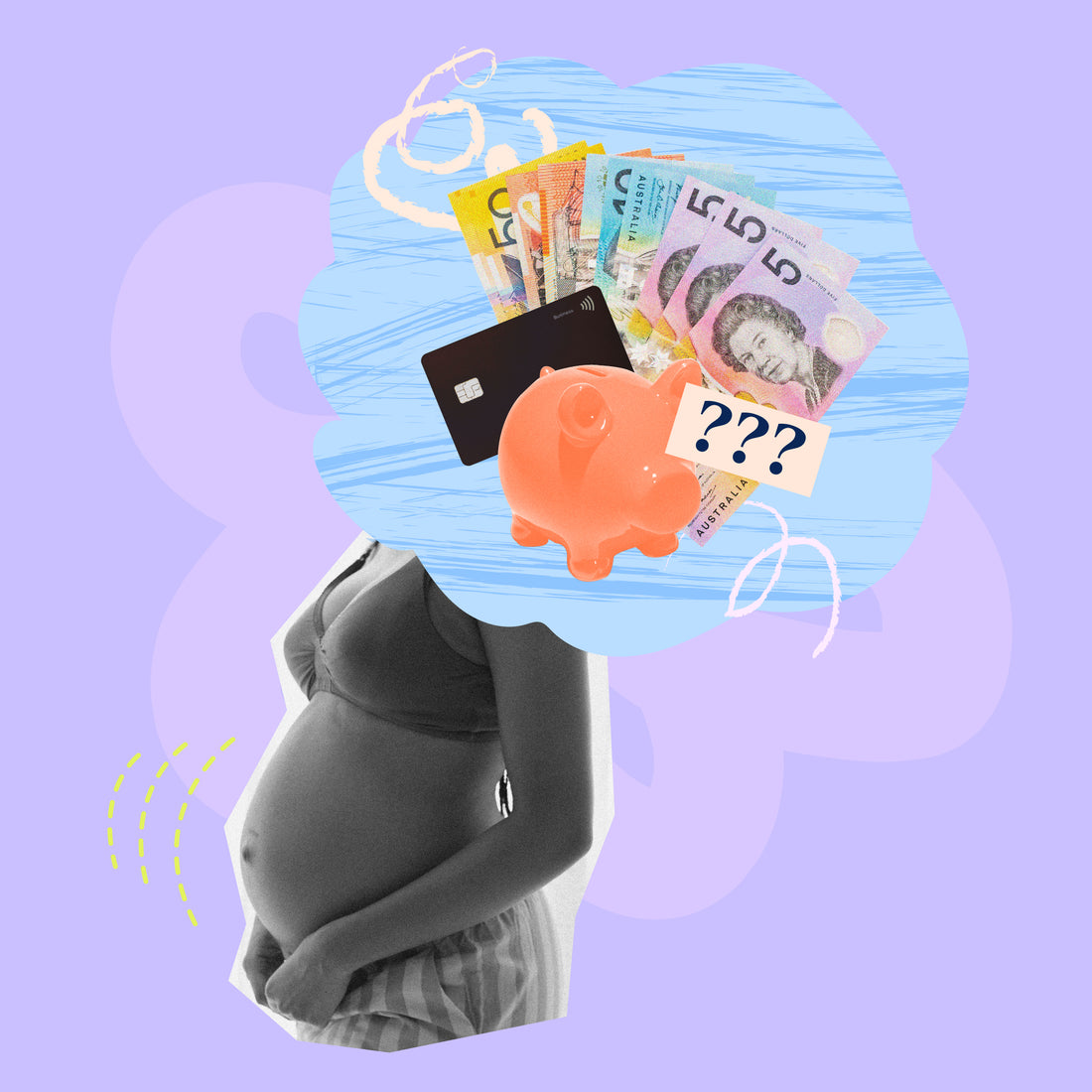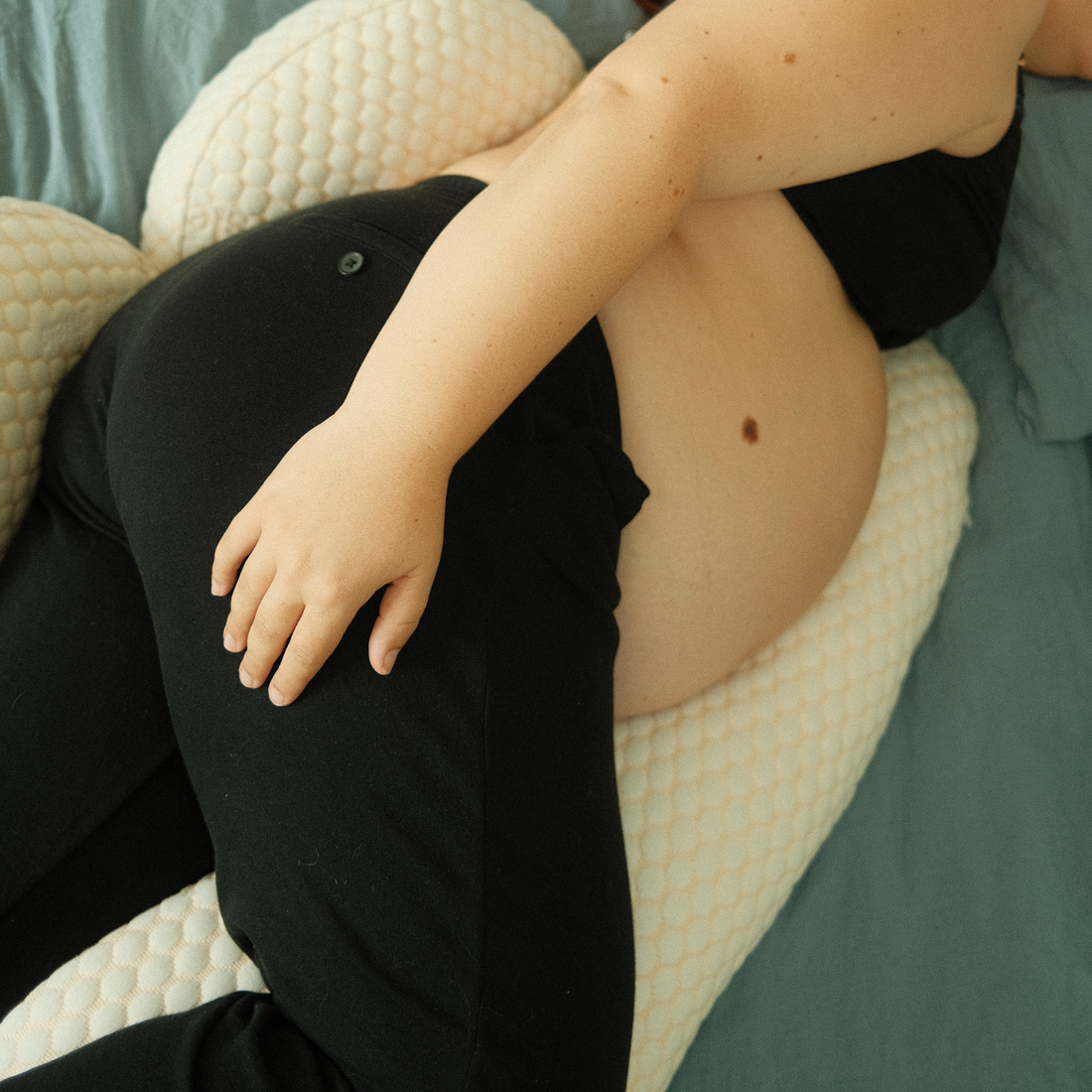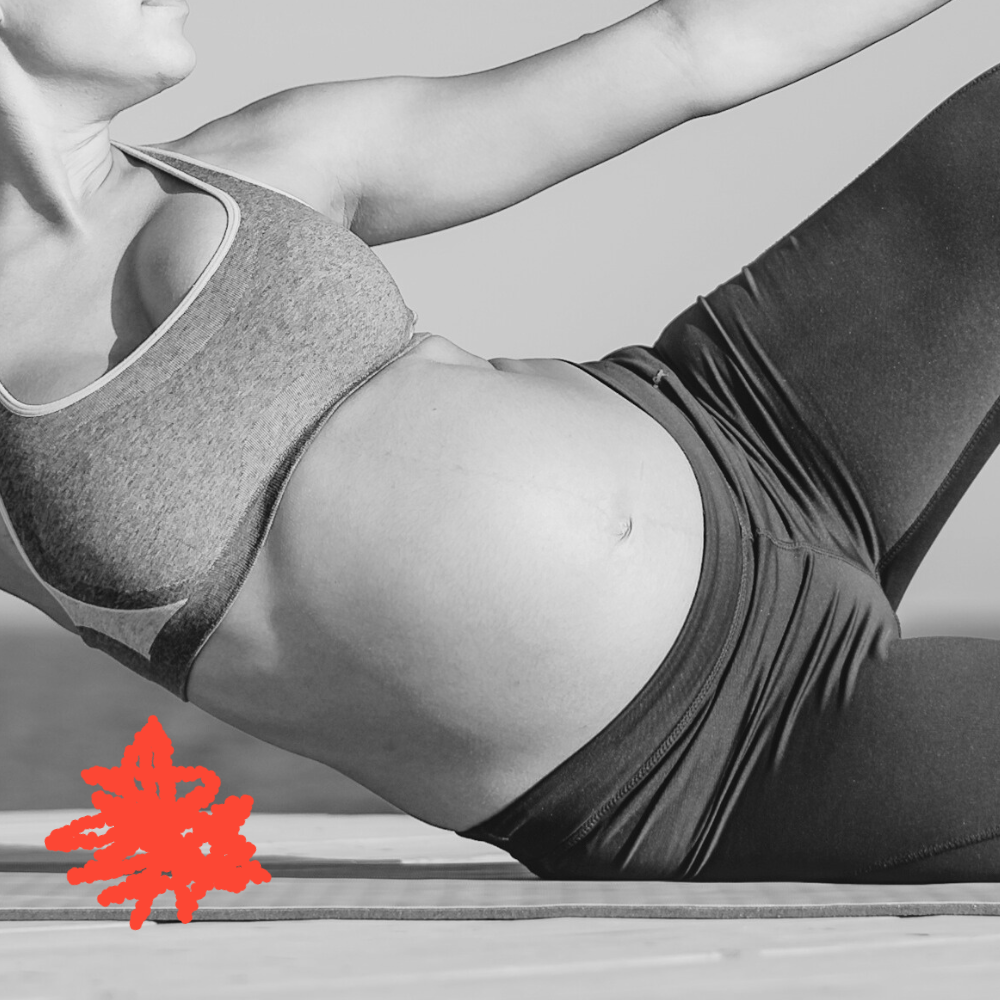Very soon (I’m talking less than a week) my husband and I will be welcoming our first baby into the world. I cannot wait to finally meet my little bundle of joy, and whilst this is one of the most exciting times in our lives, it’s also been one of financial reconsiderations and restructures. Every family is different, but for the average Australian, the price tag that comes with adding a tiny human to the mix is hefty. From the moment pregnancy is confirmed, to the years of child raising that come after, the financial commitment is no joke, with the average monthly costs of having a baby falling between $700 -$750. Many soon-to-be parents are blindsided by the true cost of pregnancy and parenthood, which starts accumulating long before the baby meets the world. So, because preparation breeds success, here I’m breaking down the true cost of having a baby in Australia in 2024.
You’re pregnant! Pay at the desk
One of the initial shocks on our journey to parenthood was the abundance of expenses we encountered before even leaving my uterus. I had private health insurance which covered my pregnancy, which you typically have to have for 12 months before you start using it for obstetric services, and then for the nine months of your pregnancy. Even if you timed everything perfectly and only needed it for 18 months, you’re still looking at an outlay of $3,500 - $6,000. Expenses for antenatal testing and scans as well as birth classes certainly added up. Typically, an ultrasound outside of a public hospital can set you back anywhere from $250 to $375 (I recently paid $420 for one?!) with Medicare offering rebates ranging from $50 to $85, and many families have at least two, and usually three. The price for educational sessions like birthing classes can be up to $500. Private classes are the most expensive, but even online programs can be hundreds. We also can’t forget things like the price of prenatal vitamins (up to $110 per month), prenatal pilates classes (at least $50 a week), plus wardrobe additions to fit your changing body (sky’s the limit but a study in the UK found the average spend on maternity wear by pregnant women is equivalent to $1200).
Public vs Private Hospital
Almost all births in Australia take place in hospitals (97% in 2023) in conventional labour wards. Of mothers who give birth in hospital, 3 in 4 (75%) do so in a public hospital. The costs between public and private hospitals vary significantly.
Public: Most women give birth in public hospitals. With Medicare covering a majority of the expenses, you’ll usually only expect up to $1,000 of out-of-pocket costs (which includes parking, and the small fees for having your partner stay overnight). Services provided include clinic and shared care, midwifery group practice and team midwifery care, with healthcare professionals like midwives, obstetricians, and general practitioners overseeing you. Some tests, such as ultrasounds, may incur extra charges, but Medicare can help offset these costs.
Private: Opting for private health insurance can provide access to private hospital births, albeit at a higher cost. Depending on your insurance coverage (which you have to have obstetrics cover for 12 months before you’re admitted into hospital to have your baby, so at least three months before you get pregnant), expenses for a private hospital birth can range from $3,000 to upwards of $10,000. These costs encompass various expenses, including OB appointments, hospital stays, fees for the obstetrician's presence during birth, tests, ultrasounds, epidurals, and any additional health classes or check-ups – to be completely transparent with you, my private OB is costing me approximately $10,000 out of pocket – and yes, I do have private health insurance (which costs me an eye watering $400+ a month).
The Nursery
Now the actually fun part: setting up your nursery! Once you’ve got all the logistics sorted, it's time for the task of creating and decorating your baby’s room! For me this has been the most exciting part, I’ve loved picking things out and doing endless amounts of 3am research – and I’ve learnt very quickly that there are so many things people say you need, that you just don’t. It’s important to prioritise our purchases, really focusing on necessities rather than indulgences. I have popped together a list below outlining some of the essential items (and their approximate costs based on the most popular designs) that you will need for the first six months with your baby.
- Cot, $1000
- Cot mattress, $350
- Blankets, $100
- Baby clothing, $400
- Car seat, $600
- Change table, $150
- Pram, $1000
- Nappies and wipes (SO. MANY, NAPPIES. Babies use upward of 3,000 nappies in their first year), $500/quarter
- Toys, $300
- Highchair, $350
- Baby carrier, $300
- Bibs, $80
- Breast pump, $300
- Bottles, $100
- TOTAL: $6030
There is ofcourse many more things that could go on this list, and you could spend a lot more, or less, on each item, but it’s good to have an idea of what you’ll be spending. A recent study found the average family spends $7,918 setting up for a new baby, and then $600 a month once they arrive.
Parental Leave and Childcare
Another big cost we need to take into consideration even before the baby arrives, is how different your financial situation will be when on maternity or paternity leave, with a subsequent reduced work capacity, and/or the additional cost of childcare. As my husband and I looked into childcare options, I was taken aback by the harsh reality awaiting us when I discovered that my local centre charges a hefty $194 per day, yes – you read that correctly. Subsidies exist, but they are dependent (in a sliding scale way) on your earnings. I could go on and on literally all day about how childcare should be more subsidised to get women back into the workforce and support working families – but that’s a rant for another article.
The Unexpected Extras
In the grand scheme of things, unexpected expenses are just part of the baby journey. Little did I know, I'd become best buddies with Gaviscon, forking out $18 a bottle to survive pregnancy (and believe me, I went through plenty of those bottles). My newfound love of Fruit Tingles – munching on at least two packets a day, adds an extra $4 to my daily tab. Oh, and the expensive world of skincare products and dermatologist appointments I needed during my first trimester. I also found out mid-pregnancy that I had high blood pressure, resulting in many additional blood tests and check-ups, each with its own bill attached. And to keep tabs on this, I had to invest in an at-home blood pressure monitor, setting me back $120.
After my experience, my number one piece of advice is to establish your baby budget early on. It’s not the most celebratory thing to do when you find out you're becoming a parent, but being aware of the expenses ahead, having time to put money aside and prepare is going to be the best way to ensure you are stress free on your journey to parenthood and will be able to focus your attention on what really matters: precious moments with your new best friend.


























